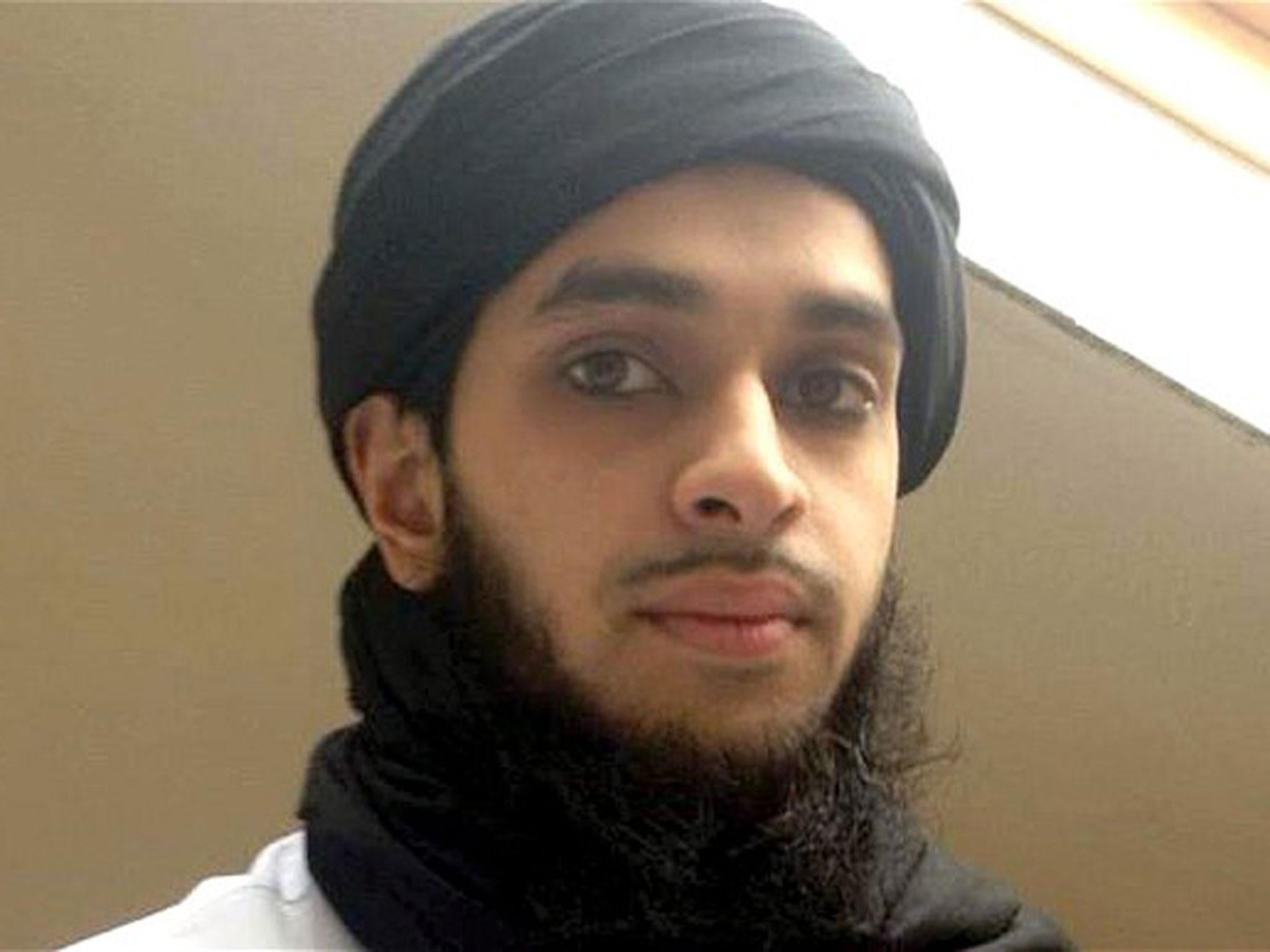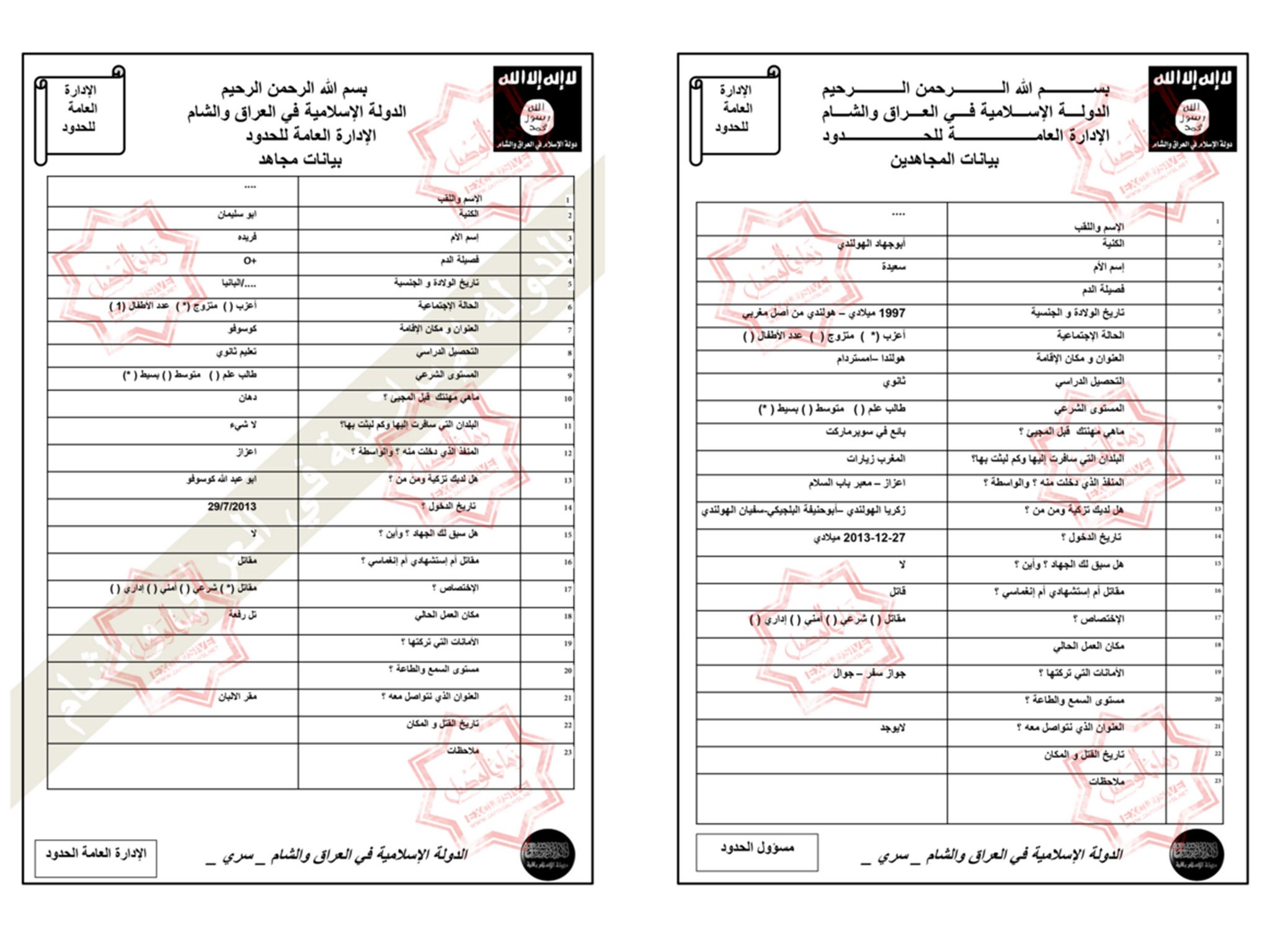Isis: London and Portsmouth among Europe's most notorious recruitment hubs for foreign fighters, report reveals
US military report finds jihadis clustering in areas ‘under social-economic stress’

Your support helps us to tell the story
From reproductive rights to climate change to Big Tech, The Independent is on the ground when the story is developing. Whether it's investigating the financials of Elon Musk's pro-Trump PAC or producing our latest documentary, 'The A Word', which shines a light on the American women fighting for reproductive rights, we know how important it is to parse out the facts from the messaging.
At such a critical moment in US history, we need reporters on the ground. Your donation allows us to keep sending journalists to speak to both sides of the story.
The Independent is trusted by Americans across the entire political spectrum. And unlike many other quality news outlets, we choose not to lock Americans out of our reporting and analysis with paywalls. We believe quality journalism should be available to everyone, paid for by those who can afford it.
Your support makes all the difference.London and Portsmouth are among Europe’s most notorious hubs for terrorist recruitment, a US military report has revealed.
A new study by the Combating Terrorism Center (CTC) at West Point found evidence that Isis and other extremist groups have networks in specific areas, mostly with significant immigrant communities, “where they can identify high numbers of potential recruits who are potentially under social-economic stress”.
Analysis of more than 850 foreign fighters showed that almost three-quarters came from cities where at least one other militant was known, often as part of the same friendship group.
Out of the jihadis known to have travelled to Syria and Iraq between 2011 and 2015, the highest number came from London, with 38 recruits, while eight were from Portsmouth – the only other British city listed in the report.

Click here to see the full-size graphic created for The Independent by Statista
The CTC’s analysis, which used only a small sample of the tens of thousands of foreign fighters known to have joined Isis and other extremist groups, revealed such recruitment hubs across Europe, including Brussels, Nice, Paris and Dinslaken in Germany.
The Belgian suburb of Molenbeek was highlighted, having already garnered international scrutiny for links to Isis fighters who carried out the Brussels and Paris attacks.
Montreal in Canada, Sydney in Australia, areas of Bosnia and Herzegovina and the Spanish enclave of Ceuta are also known sources of recruits.
“Although foreign fighters as a whole are a diverse group in terms of socio-demographics, the individual recruits themselves tend to cluster in terms of geography,” said the report by the US Military Academy.
“Approximately 70 per cent of foreign fighters came from the same city as at least one other fighter.
“This suggests that a geographically-targeted approach to countering violent extremism is more likely to succeed than a ‘shotgun’ strategy.”
The phenomenon can partly be explained by a continued influence by friends and relatives documented among radicals, despite the growth in online propaganda.
CTC analysts said: “While virtual propaganda can provide the initial cognitive opening for adopting the jihadi narrative, a human connection is necessary to push the individual to actual activism, as well as for logistical reasons for travelling to a war zone.”
Known Isis fighters from London include Mohammed Emwazi, who became known as Jihadi John after appearing in a series of gory execution videos showing the beheading of James Foley and other hostages.
He was radicalised after being detained with friends after a supposed safari trip to Tanzania in 2009, when the group were accused of attempting to reach al-Qaeda affiliate al-Shabaab in Somalia.
Several other prominent British Isis militants joined the group with friends, including six young men from Portsmouth who called themselves the “al-Britaini Brigade Bangladeshi Bad Boys”.
The “Pompey Lads” flew together from Gatwick to join the so-called Islamic State together in September 2013, having grown up streets apart in one of the most deprived districts of the UK.
Ifthekar Jaman, Assad Uzzaman, Mehdi Hassan, Hamidur Rahman and Mamunur Roshid were all killed in Syria, with the group’s only survivor – Mashudur Choudhury – jailed for terror offences after returning to the UK.
Jaman, who became prominent for his social media accounts of life under Isis, told the BBC he expected to reach “eternal paradise” shortly before his death in 2013.
“I am Isis. This is the group I am with. We are trying to establish the law of God, the law of Allah,” the 23-year-old said in a video call.
“This is the duty on me... all these people are suffering. Muslims are being slaughtered.”
Harry Sarfo, a former London postman who joined Isis in Syria last year, said his decision was heavily influenced by a friend who supported the group, as well as an extremist he met in prison and feelings of alienation.
“My friend, who I later joined to go to Syria, played a big role in my radicalisation, same as the police,” he told The Independent after being jailed upon his return to Europe.
“My friend kept on telling me, ‘This is what you get for being Muslim in the West... they think you are a bloody terrorist. You should go and live in the Islamic State, where every Muslim’s rights are protected. Life for you here is over. Democracy is a cancer, it will destroy us Muslims’.”
The comments fit analysis by the CTC, which suggested that the narrative used by Isis and al-Qaeda claiming Muslims are being killed and persecuted around the world by the West was a stronger driving force for recruits than Islam itself.
“The ability of jihadi groups to recruit foreign fighters is thus based on creating a narrative that is focused on the ongoing deprivation of Muslims, both in specific Western polities, as well as in the international arena,” said the report.

“It seems that religious figures play a relatively minimal role in this process, a fact that provides support for previous findings indicating that political and cultural aspects of jihadi ideology play a greater role in the radicalisation of foreign fighters than strictly religious ones.”
The analysis corresponded with revelations from a trove of Isis entry forms leaked earlier this year, where the majority of those joining the so-called Islamic State listed their Sharia knowledge as “basic”.
The CTC's study revealed that the vast majority of almost 1,200 militants surveyed had no formal religious education and that extremist groups may prefer such recruits because they are “less capable of critically scrutinising the jihadi narrative and ideology” and instead adhere totally to their chosen organisation’s violent and reductive interpretation of Islam.
It found there was no single “profile” for the extremists, although most were aged in their 20s, were unemployed or students and had an immigrant background.
Previous reports have revealed that many also have a criminal past, such as involvement in minor gang crime, which can be preyed on by recruiters presenting a “redemption narrative” to exploit skills valuable to undercover networks.
At least 74 per cent of foreign fighters surveyed by the CTC had been killed in action, although experts warned the number could be skewed by the fact identities of dead foreign fighters are more likely to be in the public domain that those still in action.
Three-quarters of British fighters in the sample had been killed, with the death rate standing at 66 per cent for Isis and 77 per cent for al-Qaeda’s affiliate Jabhat al-Nusra, which has now renamed itself as Jabhat Fateh al-Sham after supposedly splitting from its parent organisation.
Death tolls in Syria and Iraq are almost impossible to confirm, with the absence of impartial authorities on the ground and warring propaganda messages from groups battling for control.
Subscribe to Independent Premium to bookmark this article
Want to bookmark your favourite articles and stories to read or reference later? Start your Independent Premium subscription today.
Join our commenting forum
Join thought-provoking conversations, follow other Independent readers and see their replies
Comments